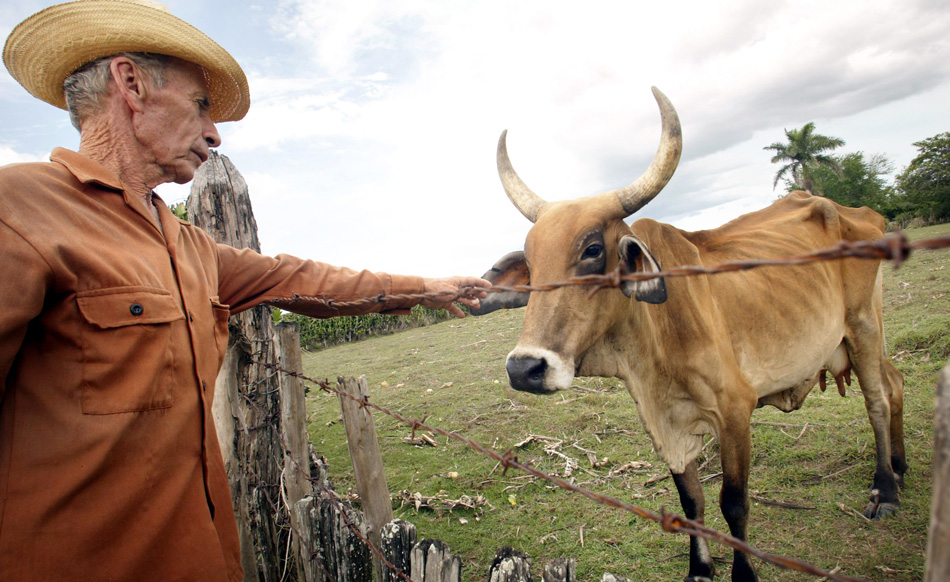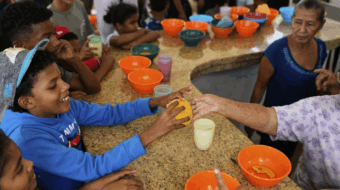
Cuba’s Council of Ministers recently announced changes to regulations introduced in 2008 that gave citizens usage rights to land, the purpose then and now being to bolster domestic food production.
The expectation in 2008 was that many of the 500,000 workers about to leave state employment would become farmers. The Cuban state owns 80 percent of the island’s farmland. The precariousness of Cuba’s economy, now in recession, prompted both the original plan and the recent modifications. Cuba struggles to secure foreign investment, hard currency, and to grow its economy. The socialist state also has the obligation of guaranteeing employment, income, social services, education, and food for all citizens.
The U.S. economic blockade grinds away, however, as new U.S. travel restrictions will cut tourism income. Chaos in Venezuela has, meanwhile, has upended Cuba’s beneficial trade and oil-supply relations with that country. Exports of nickel, a big money-maker for the state, are down. Cuba is now spending more on imported food than it did in 2008. Many would agree that the survival of Cuban socialism rests in part on a secure, sustainable food supply. Indeed, during the first five years of economic collapse associated with the fall of the Soviet Bloc, the average adult Cuban lost 12 pounds of body weight. In 2008, Cuba was importing 70 percent of its food and yet half its arable land was idle. Responding, the government offered 4,737,010 acres of land to 220,000 private individuals and cooperatives under terms of long-term use. It encouraged the expansion of agricultural cooperatives. The state encouraged farmers to sell food directly to consumers and promoted local decision-making in regard to production and marketing.
Now, nine years later, the government has fine-tuned those reforms. According to Cubadebate.cu, individual land users may now ally themselves with various kinds of agricultural businesses, no longer being restricted to cooperatives. Individuals can count on using land parcels for 20 years instead of 10 years, as previously. Renewal for another 20 years is assured. Cooperatives are no longer confined to 25 years but may use land indefinitely. The government is offering larger minimum-sized tracts than before.
Individual farmers gain additional usage time if they restore soil productivity or remove the invasive marabú plant. No longer may land holders live away from their acreage. The new regulations seem to favor crop production over cattle-raising, which expanded after 2008. Individual farmers may use idle land on cattle ranches in order to raise and feed young stock.
The new policies maintain state ownership of land; transferring land granted for agricultural use to someone else is still not allowed. Land may not be used for fraudulent purposes or profiteering. Farmers may use larger portions of their land for buildings and other improvements than before. Taxation on agricultural income will be increasing and penalties exist for leaving land idle.
What problems gave rise to these alterations? As of 2012, the number of parties still holding land they received earlier was down to 163,000 farmers or cooperatives; they were farming only 79 percent of the 3.8 million acres under their control. More land was being used for cattle-raising than for food crops. Reports of bureaucratic impediments to land transfers were circulating. Access to credit and supplies was difficult.
Presently, 151,000 farmers or cooperatives are working 2,965,000 acres of land under usufruct arrangements. That’s 1.77 million fewer acres than were handed over in 2008. Some 70,000 would-be farmers are gone. Importantly, almost half of Cuba’s potential farm land is still lying fallow. In essence, domestic food production is in the doldrums. According to reporter Marc Frank, Cuba now imports 60 percent of the food its people require, almost as much as in 2008. The annual cost is $2 billion. Over many years, there’s been no substantial improvement in the domestic production of cereal grains, dairy products, beans, and certain meats.
Extenuating circumstances include: years of drought plaguing much of Cuba, the woody marabú weed spreading throughout the island, land often being located at great distances from water and population centers, and little enthusiasm for farming on the part of many younger Cubans who are highly educated and citified. Importantly, only 25 percent of Cuban soils are classified as productive or very productive, while 50 percent of Cuba’s soil ranks as poorly productive. Residual harmful effects of sugar monoculture have taken a toll.
Cuba responded to post-Soviet era shortages by introducing organic and low-input farming methods. Non-traditional approaches may again come to the rescue of soil fertility via a well-developed agro-ecological movement. So-called conservation agriculture, now on the horizon, calls for leaving soils undisturbed, covering soil with organic materials, and diversifying crops.
Agroecology Professor Miguel Altieri of the University of California believes that, “[I]f all peasant farms and cooperatives adopted diversified agroecological designs, Cuba would be able to produce enough to feed its population, supply food to the tourist industry, and even export some food to help generate foreign currency.”
Whether or not Cuba’s government and society, besieged by the United States and dwarfed by capitalist power worldwide, can mount sufficient focus and determination to realize this potential remains to be seen.










